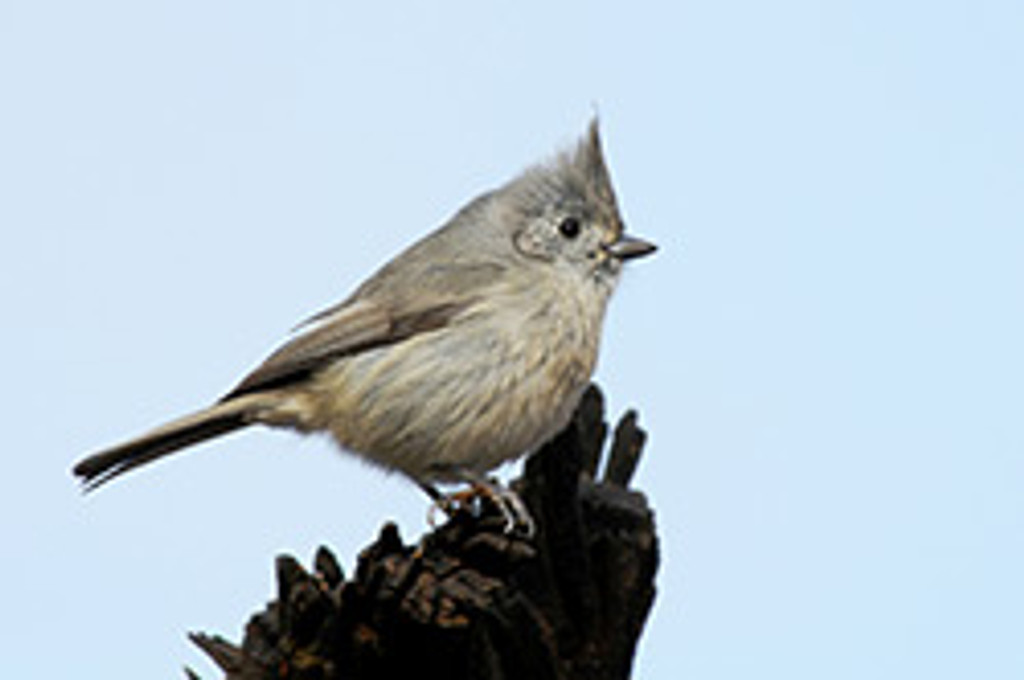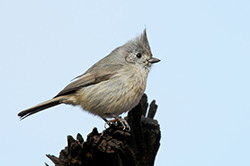
Oak Titmouse
Posted by Grange Co-op on 13th Jan 2015
Male & Female: Identical small, brown-tinged gray bird with small tuft or crest. The face is plain and the undersides are a lighter gray. Large dark eyes; stubby, bluish gray bill; bluish gray legs
 NESTING:
NESTING:
Nests in natural cavities, abandoned woodpecker holes and birdhouses. Nest is made of grass, moss, fur and feathers. Female incubates 6-8 mostly unmarked white eggs for 14-16 days. young fledge at 6-21 days and are independent at 5 weeks.
RECOMMENDED NEST BOX:
Countryside Culture’s Chickadee-Nuthatch Nest Box. Shop bird houses.
FEEDING:
Acrobatically hangs from the limbs of trees foraging on foliage, twigs, branches, trunks, and occasionally on the ground, eating mostly seeds, nuts and acorns. Also eats insects and spiders. Come to feeders for sunflower seeds, nuts and suet. Can be seen hammering seeds against branches to open them.
RECOMMENDED FEED:
Black Oil Sunflower, Rogue Chickadee mix, and Rogue Wild Bird Nut Treat. Shop Wild Bird Food.
RECOMMENDED FEEDERS:
Clinger-only feeder, any mixed seed tube feeder, specialty sunflower feeder, or hopper feeder. Shop Wild Bird Feeders.
HABITAT:
The Titmouse prefers open woodlands of warm, dry oak and oak-pine at low to mid-elevations. It is a common year round resident in the Rogue Valley watershed and surrounding hills of Jackson, Josephine, and southern Klamath Counties.
OTHER INTERESTING FACTS:
To some people, the Oak Titmouse seems ordinary, but, to others, an oak forest would seem empty without it. The Titmouse mates for life, which seldom exceeds five years. Their song is a clear, whistled “teewee teewee teewee”; their call is a scratchy “tsikadee-dee”. The Oak and Juniper Titmouse were formally considered to be the same species, the Plain Titmouse (Parus inornatus). However, careful study revealed differences in several genetic, plumage, voice and ecological characteristics. In 1996, the American Ornithologists’ Union made the split.
COMPARE TO:
Juniper Titmouse appears almost identical, but differ in voice as well as range. The Juniper Titmouse resides in eastern Klamath Co. and Lake Co. in juniper woodlands. Tufted Titmouse, which lives east of the Rockies has a whiter belly, rusty flanks, and black on the forehead.
Would you like to attract birds to your yard? We’ve got a great selection of products to help you and your feathered friends get together. Shop our Wild Bird department now.
